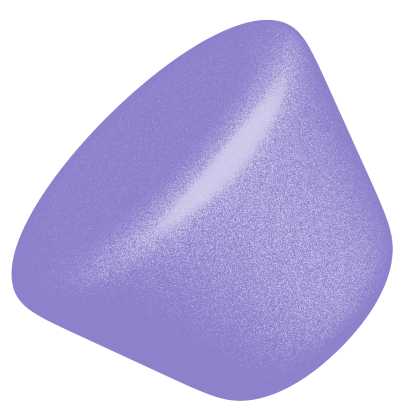Is Tinder winning the dating app war?

- Dating apps are all scrambling to highlight the humanity in its digital apps as the cultural zeitgeist swings towards prioritizing real-life connections and experiences.
- Tinder has the highest brand awareness in the US and has enjoyed healthy upswings in 2024, with an increase in all its metrics, including a 4% lift in preference.
- Bumble, meanwhile, is losing, especially amongst the Gen Z age group. Although awareness increased 10%, usage plummeted 8% amongst 18 to 24-year-olds.
It’s not easy being single in 2025. At least, that’s the cries of the hundreds of thousands of us in the trenches, swiping through one meaningless face after the other.
This feeling isn’t new. For years, we’ve seen a notable cultural shift in attitudes towards dating apps as people become disillusioned with the failures they’ve faced on it. Everyone from TIME magazine, opens in new tab to Wired, opens in new tab to Daily Mail are covering the dating app snub phenomenon.
The apps see this, and they are responding, doubling down on more relatable, “authentic” content that embraces the intersections of dating and culture.
For example, Bumble has launched a year-long editorial partnership, opens in new tab with the editor-in-chief of Interview magazine, Mel Ottenberg, with the first project being with the host of Chicken Shop Date Amelia Dimoldenberg, and Hinge launched a campaign with real-life couples who met on the dating app, opens in new tab. The hook? The couples have all crossed paths IRL in the past but, ultimately, connected for real on Hinge. Even Tinder is shedding its identity of being known as a hook-up app, its 2024 “It Starts With a Swipe”, opens in new tab campaign showcasing why “it’s great to be wrong about Tinder” (e.g. that it actually does work for meaningful connections).
They have their work cut out for them, though.
According to our data, 24% of people in the US have used a dating app or site in the last 12 months. A UK Ofcom study, opens in new tab in 2023 showed that the Big Four (Tinder, Bumble, Hinge and Grindr) all saw declines in users – Tinder lost 600,000 dating hopefuls alone. Dating app downloads have fallen in the US – 287.4 million users in 2019 to 237.1 million users in 2024, according to The Business of Apps, opens in new tab. And, financially, in the last year alone, Bumble’s share price has gone down 45%.
In a recent story by Dazed, opens in new tab, Gen Z daters outline their desire to meet people IRL (also known as “the wild”), with the perception that this could foster more genuine connections. In a 2024 dating report by Eventbrite, 69% of American millennials would prefer to meet in person.
That’s the challenge facing dating apps in 2025 – ensuring they prioritise real-life connections, rather than endless digital ghosting.
Sign up to Shorts
For fortnightly brand insights, stories and goodness that'll help you win.
What does the data say? 🤔
According to our brand health data, Tinder is winning.
In the US, it has an 86% brand awareness and the highest rate of conversion between Awareness to Consideration (59%) and Consideration to Preference (54%).

In comparison, Bumble is sitting at 66% awareness and Hinge at 45% awareness.
Our data also shows that Tinder had a pretty good 2024, with an increase in all its metrics from Jan ‘24 to Dec’24 – including a 4% lift in preference. More amazingly, in the 18 to 24-year-old age group, Tinder saw a whopping 12% increase in preference.
Something to keep in mind – although Tinder is leading in brand health metrics, Bumble's users have been increasingly eating into Tinder’s market share year-on-year, while Hinge reached an all-time-high in downloads in the third quarter of 2024.
Hinge also had a decent 2024 in the brand-health world, with a 4% increase in consideration. As a brand, Hinge is also well-placed to capitalize on our increasing insistence on authenticity, being regarded as an app for more… serious dating. Curiously, though, this increase is driven by millennials and older (e.g. not Gen Z), with consideration in the 25 to 34-year-old age group increasing by 10% in the last year.
Knowing that it has work to do in the Gen Z market, Tinder recently launched a campaign on TikTok, opens in new tab, tapping influencers to share their experiences finding dates IRL vs on Tinder. After watching the series, 53% of respondents said they found dating apps “more appealing”, with 58% coming away saying they’re more likely to use Tinder.
Bumble’s metrics are a bit of a bummer, though.
It’s pretty clear – Bumble’s had a bad 2024
Bumble’s partnership with Dimoldenberg, as the first in a year of planned editorial content, is a pivot in messaging – a clear signal that they could be doing more to connect with a dwindling audience and the younger generation, something that Bumble has historically struggled to do, opens in new tab.
Tracksuit data shows that for the 18 to 24-year-old age group, Bumble’s awareness rose 10-percentage-points, while its usage plummeted 8-percentage-points in 2024. The kids are not okay.

More generally, although Bumble’s awareness has increased 8-percentage-points from Jan ‘24 to Dec ‘24, none of its other metrics have had a statistically significant shift upwards, showing that while more people have heard about the brand, this hasn’t converted down into consideration.
In mid-2024, the brand fumbled a minor “brand refresh, opens in new tab”, courting backlash after its campaign that was designed to address women’s tiredness with dating apps backfired: a range of anti-celibacy ads that were deemed unfeminist.
This was bad, for obvious reasons, but especially bad for a dating app that positions itself as empowering for women, opens in new tab (“empowering” is one of Bumble’s strongest perceptions).

Who else is in the race? 🏃
Plenty of Fish, Coffee Meets Bagel, Raya and Badoo are all in the conversation, though most of these brands have not made any significant strides in the metrics – apart from Coffee Meets Bagel, which saw a 3-percentage-point increase in consideration, from 5% to 8%, over 2024.
With dating app activity on the decline, a few new challengers have entered the mix, hoping to capitalize on where the culture is moving. Breeze, for example, is the dating app that “takes online dating offline, opens in new tab”, the app sends out seven profiles nightly – if there’s a match, you share your availability and the app schedules the date. The chat function only opens two hours before a date. Kinda crazy.
There is Feeld, opens in new tab too, of course, which bills itself as more progressive, inclusive way to date digitally, “a dating app for the curious”.
We’ll keep on tracking!








